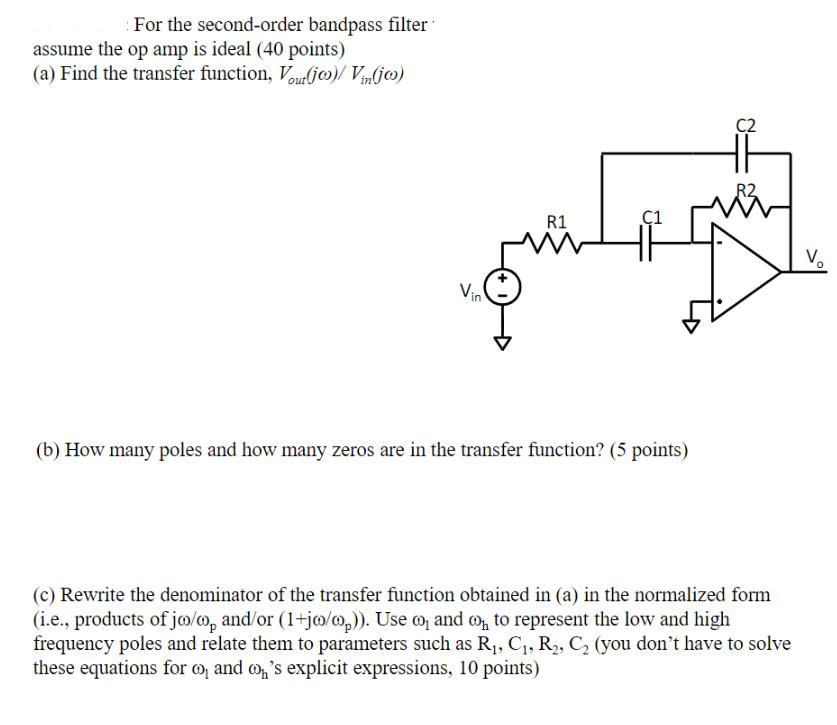Answered step by step
Verified Expert Solution
Question
1 Approved Answer
For the second-order bandpass filter assume the op amp is ideal (40 points) (a) Find the transfer function, Vourt (joo)/ Vin(jo) Vin R1 C1



For the second-order bandpass filter assume the op amp is ideal (40 points) (a) Find the transfer function, Vourt (joo)/ Vin(jo) Vin R1 C1 (b) How many poles and how many zeros are in the transfer function? (5 points) C2 (c) Rewrite the denominator of the transfer function obtained in (a) in the normalized form (i.e., products of jo/o, and/or (1+joo/op)). Use 0 and to represent the low and high frequency poles and relate them to parameters such as R, C, R, C (you don't have to solve these equations for , and on's explicit expressions, 10 points) V Problem 4 (continued): (d) Choose R, R, C, and C (note the parameter choices won't be unique) such that you have a bandpass filter working for frequencies between 18 Hz and 18 kHz (i.e., frequencies less than 18 Hz or larger than 18 kHz are filtered out). The passband gain should be at least 1 (i.e., 0 dB). For practical reasons you should use capacitors no larger than 100 nF (Hint: Use the relations in (c) to help you narrow down the parameter choices, 10 points) Problem 4 (continued): (e) Use MATLAB/Python to generate a Bode plot of the magnitude of the transfer function Vout(jo)/Vin(jo). Check whether all the design goals (in terms of frequency range and passband gain) are satisfied; otherwise modify the parameters to improve your design. Attach the MATLAB/Python code and the Bode plot as a separate page (10 points)
Step by Step Solution
★★★★★
3.50 Rating (150 Votes )
There are 3 Steps involved in it
Step: 1
a The transfer function of a secondorder bandpass filter can be derived using circuit analysis techniques Assuming an ideal op amp the transfer functi...
Get Instant Access to Expert-Tailored Solutions
See step-by-step solutions with expert insights and AI powered tools for academic success
Step: 2

Step: 3

Ace Your Homework with AI
Get the answers you need in no time with our AI-driven, step-by-step assistance
Get Started


